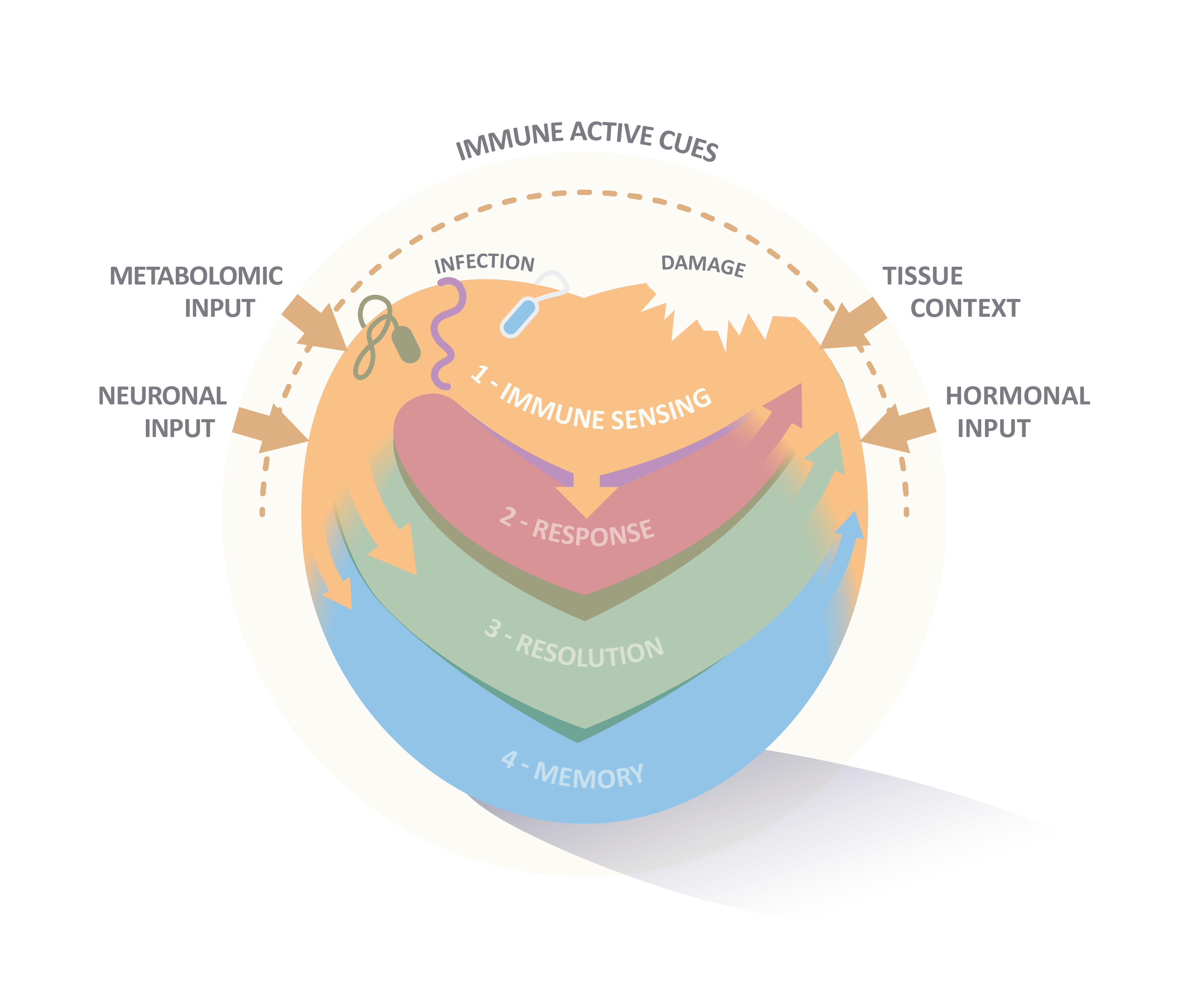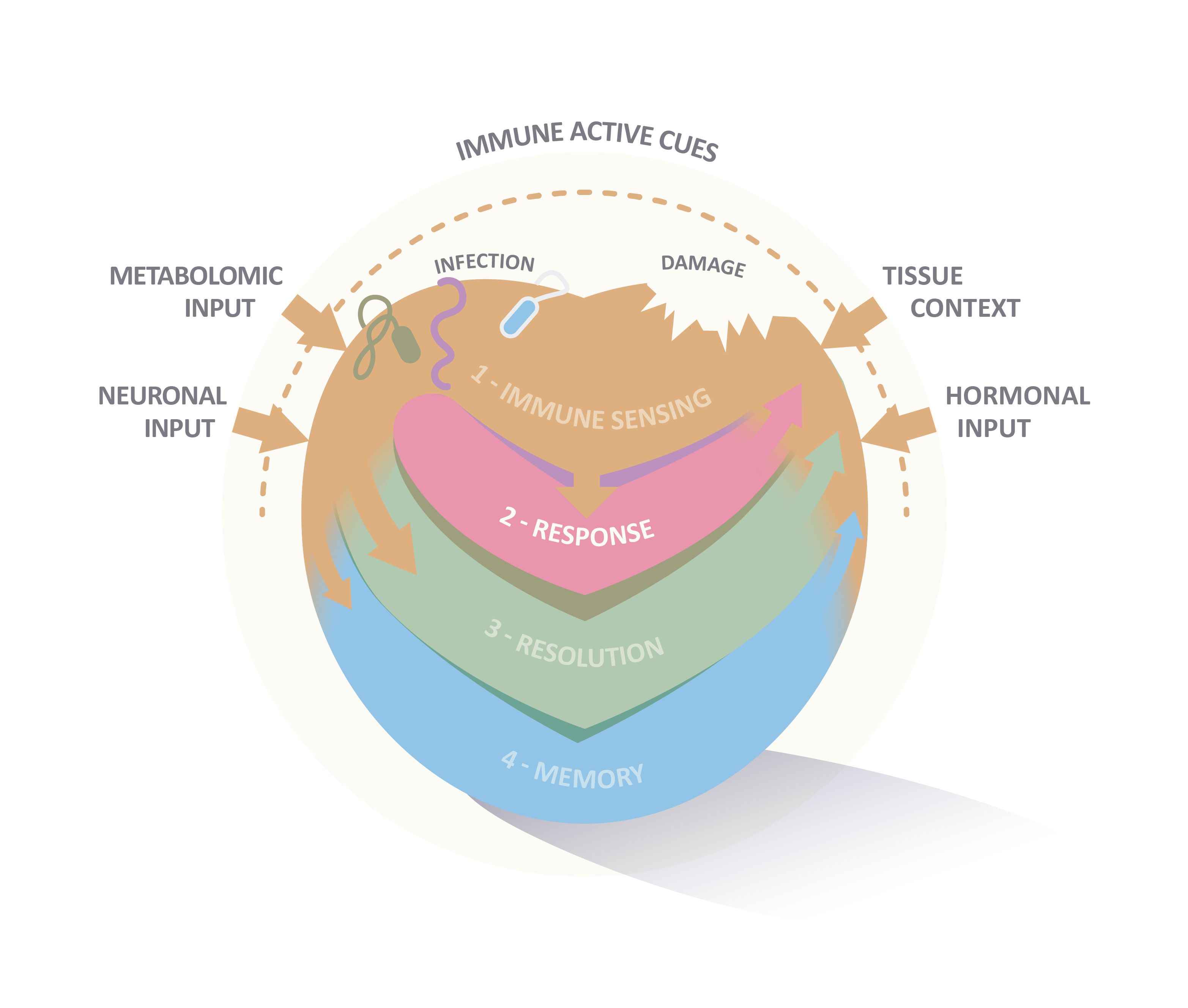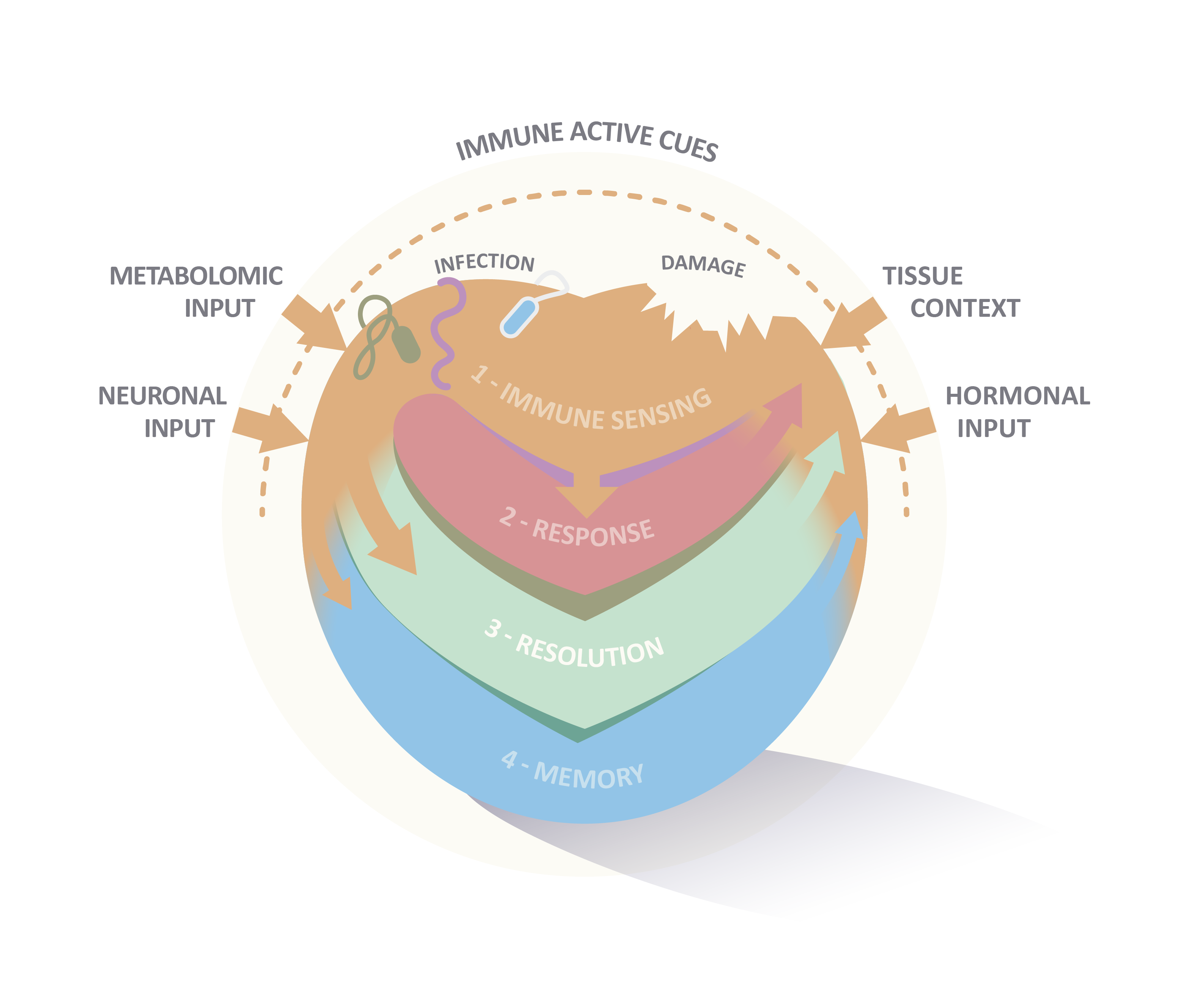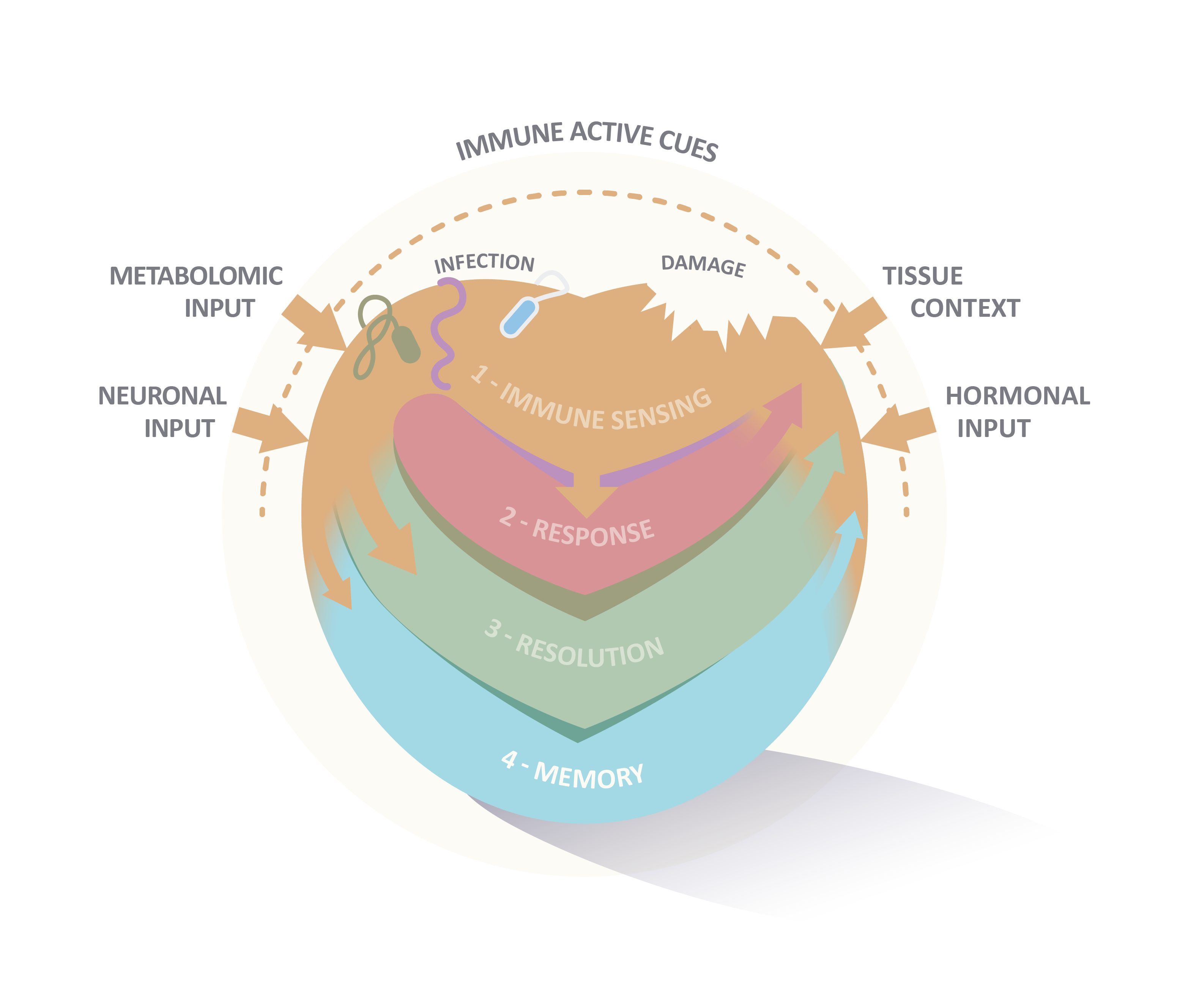Program 1: Mechanisms of Sensing
The immune system’s challenge: Correctly identifying pathogens and dangers to the host
We aim to decipher the precise molecular principles underlying the detection and integration of information allowing the immune system to distinguish dyshomeostatic from homeostatic states in tissues and to effectively yet appropriately respond to danger and threats.
A thematic overview of the four key areas sensing of modified self, systems analysis of inflammasome activation, intestinal chemosensing and neuro immune crosstalk, and immune modulation in CNS excitability in health and disease is provided in the figure below.

ImmunoSensation2 members investigating the mechanisms of sensing
Sensing of modiefied self
System analysis of inflammasome activation
Intestinal chemosensing and neuro-immune crosstalk
Immune modulation in CNS excitability
Program 2: Circuit regulation of sensing and response
The immune system’s challenge: The safe elimination of pathogens and dangers while limiting collateral damage
The sensitivity for the detection threshold for foreign and modified self-molecules must be continuously adapted to the specific phase of an immune response to avoid under or overstimulation. Cell motility and migration is a characteristic feature of the immune system that allows clustering, crosstalk, clonal expansion and relocation in order to focus immune response to specific tissue sites, such as organs, thereby limiting the associated immune-mediated damage. At the same time, motility and migration provide important cues for systemic interconnectivity of different modular immune functions.
In the figure below you may find an overview of the three key areas immune cell migration and chemotaxis, organ-speficif immune circuits, and impact of genetic and epigenetic variation on immune responses and their feedback circuits.

ImmunoSensation2 members investigating the circuit regulation of sensing and response
Immune cell migration and chemotaxis
Organ-specific immune circuits
Impact of genetic and epigenetic variation on immune responses and their feedback circuits
Program 3: Circuit regulation of sensing and resolution
The immune system's challenge: The timely resolution of immune activity and resumption of homeostasis
The complete resolution of an immune response is the prerequisite for the return to homeostasis. Environmental factors and genetic variation add to the challenge of safely distinguishing minute residual amounts of pathogen in the context of abundant immune-mediated damage. The risk of a vicious circle in which damage-associated molecules drive a feed-forward, non-attenuating inflammatory response is inherent to this phase of the response.
Here, we study the circuit regulation of resolution and sensing in two key areas: cerebral innate immune activation in normal aging, neurodegeneration and regeneration, and modeling of tumor immune evasion and host restraints.

ImmunoSensation2 members investigating the circuit regulation of sensing and resolution
Cerebral innate immune activation in normal aging, neurodegeneration and regeneration
Modeling tumor immune evasion and host restrains
Program 4: Circuit regulation of sensing, adaptation and memory
The immune system’s challenge: (Re)-programming of cells and tissues to best protect from future insult
It is now widely accepted that, instead of uniformly responding to a given insult, innate immune cells undergo continuous cellular (re)-programming that adapts their immune sensing capabilities to their local tissue environment and to past pathogen exposures. To describe, characterize and molecularly comprehend these processes, we propose a Network Immunoscience Theory with ‘adaptation’ processes and ‘trained immunity’ (also termed ‘innate immune memory’) being two major cellular programming mechanisms. Reprogramming comprises epigenetic imprinting, the wiring of signaling pathways and the expansion and re-localization of cellular subsets equipped with those specific functions.
A thematic overview of the two key areas cellular and molecular ‘adaptation’ of innate immune cells, and molecular regulation and the role of ‘trained immunity’ in disease, is provided in the following figure.

ImmunoSensation2 members investigating the circuit regulation of sensing and memory
Cellular and molecular 'adaptation' of innate immune cells
Molecular regulation and the role of 'trained immunity' in disease
Bridging program: Biomathematics
Interdisciplinary Research Unit (IRU) to bridge Mathematics and Immunology
Together with additional collaborating scientists of the Hausdorf Center for Mathematics (HCM), the IRU develops sophisticated new methods for the improved analysis of large and complex data sets as for example generated in the context of single cell sequencing. Furthermore, biomathematical expertise will allow mathematical modeling of the motion and migrational behavior of immune cells. Another example is the mathematical modeling of tumor immunotherapies and the application of deep learning to the analysis of multispectral imaging of immune cell infiltrates.
Moreover, one of the highly ambitious goals of our collaborative effort with the HCM is the development of mathematical algorithms that allow the characterization of local and systemic immune network regulation based on the data sets generated in research program 1 to program 4.
ImmunoSensation2 members involved in the bridging program Biomathematics





